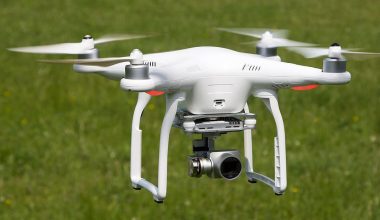The air transport industry has embraced advanced technologies like no other. Flight trackers are ubiquitous now and use innovative technology and elegant in-design features to keep up-to-date flights. ADSBExchange is a renowned name in the world of geeky aviation enthusiasts seeking to track and view aircraft that fly locally and globally. To serve live flight data into the user’s area directly from the air, ADSBExchange uses Automatic Dependent Surveillance-Broadcast (ADS-B) receiver functionality. It offers precise tracking of aircraft, its GPS location, altitude, ground speed, etc. ADS-B technology enhances aviation infrastructures and flight tracking, planning, and dispatch operations.

ADSBExchange is the largest public source of unfiltered commercial and military flight data in the world, catering to the flight tracking needs of researchers, hobbyists, etc. It opens up an entirely new world of flight monitories by supplying data from volunteers through APIs. It is a global aircraft tracking network that collects and collates flight data with globally distributed recipients.
ADS-B Exchange tracks over 10,000 +aircraft per day from 6000+active feeds and shares data on military or particular private aircraft as there are no FAA BARR/ LADD, military or, other filters used. Federal Aviation Administration Block Aircraft Registration Request/ Limiting Aircraft Data Displayed (LADD) program addresses aircraft owners’ or operators’ privacy and security concerns to limit or block flight tracking information transmitted over the Internet. But ADS-B Exchange doesn’t participate in FAA data filtering so as to allow users to see the data collected.
ADS-B Exchange features ADS-B/ Mode S/ MLAT feeders worldwide to offer flight tracking of both civilian and military traffic. It’s a community that opens up a world of interesting traffic without materially affecting security.
Accessing data by ADS-B exchange costs significantly more than other sources as they are unfiltered, unblocked, and show military, FAA blocklist, state, VIP aircraft. ADS-B Exchange doesn’t remove information on aircraft data from the site without a court order valid in a jurisdiction. ADSBExchange’s authorization to access data is limited to only personal, non-profit, and educational purposes. Written permission is required to use the data for commercial purposes.
Live and Historical Data
ADS-B Exchange has free and paid API services to those who set up a feeder to collect data and commercial users, respectively. The revenue from paid API access is used to offset the costs of collecting and storing the data. ADSBexchange data collection requires that one can freely participate in a world network of sensors and provide royalty-free, worldwide, perpetual, and irrevocable data to ADSBexchange.

Feeding ADS-B Exchange
Pooling feeder data on ADSBExchange helps users to have an unobstructed view of the sky and a complete picture of air traffic. The ADS-B and Multilateration (MLAT) are the data sources to feed aircraft information. ADS-B is equipped on an aircraft to derive position information from a GPS network and transmit it along with a host of other data to the ATC or an ADS-B receiver on the ground. The Real-time GPS features involve real-time information on speed, direction, and altitude of present movements. ADSB flight tracker app is well-optimized for mobile and tablet devices. Airplanes have transponders to pass on data regarding altitude, speed, heading, and more to the ATC.
ADS-B is a leading flight tracking edge that allows aircraft to determine its own position from a satellite overhead and can help it fly more direct routes at more efficient speeds and altitudes. It is less vulnerable to adverse weather conditions and less expensive to operate than existing satellite communications.
For aircraft not equipped with ADS-B, its position is calculated by multilateration using Time Difference of Arrival in areas with multiple ADS-B coverages.
Track military aircraft on ADS-B Exchange by clicking on the ADSB-Radar view-tracking map, and the actual map of the world will show up, and the aircraft are flying on routes. Airplane silhouettes contain information such as registration number, type code, altitude, speed, source, and RSSI. ADS-B Exchange’s ‘Radar View’ page depicts military traffic isolated by clicking on ‘U’ on the screen.
Differentiating features of ADSBexchange flight tracking site
ADSBExchange is a leap through in a flight surveillance world that is quite different from other flight tracking sites in the following sense:
1. Other flight tracking sites do not display many private planes as there are no data beyond the ability to track their route due to anonymity request by owners. Similarly, military aircraft are also shown as ‘Blocked’ because of their operational secrecy. But it’s not the same with ADSBExchange. It bursts this bubble by not censoring the ADS-B data of military aircraft. The non-commercial flight tracking system is powered by a certain amount of specialized open-source software to ensure an unfiltered network.
2. ADSBExchange offers much more than the on-time performance of an aircraft. It aims to feed users with ‘what’s up there’ rather than just ‘has guest stepped-off the plane.’
3. It doesn’t ‘estimate’ or ‘interpolate’ on where the aircraft should be but instead updates positions as often as once per second based on the actual data received. The aircraft movement on ADSBExchange is not an unnatural movement as it is based on accurate data.
4. ADSBExchange features are not behind a ‘paywall’ and are free and appreciate the feeds of users who enjoy them.
5. ADS-B Exchange doesn’t show photos for selected aircraft in the event of an unknown aircraft type or lack of image in planespotters.net. ADS-B Exchange has a provision of the silhouette for selected aircraft available in the library.
Uncensored network- Privacy concern?
Aircraft periodically broadcast their GPS position unencrypted along with their speed, heading, and tail number. In a modern age of anti-censorship, decentralization, ADSBExchange has made it easy for aviation enthusiasts and journalists to quickly turn to it for getting updates on military planes that are blocked on other websites. The site has spot coverage of many cities and has proven its worth in breaking news events. One may argue that the ‘co-op of unfiltered flight data’ can evoke adverse security incidents due to publishing uncensored flight data.
General aviation pilots or CEOs of any reputed company might be targeted when flying. Secret mission operations might be public beforehand. Other similar issues may arise. But, as a matter of fact, a live feed of plane location is a freedom of information and transparency issue. Anyone who perceives aircraft position data as a ‘security threat’ needs to be tempered with the fact that the likely information from ADS-B Exchange’s service platform alike is easily deployable by anyone who can quickly build their own receiver.
Setting up an ADS-B feeder
As a non-commercial flight tracking alternative, ADS-B Exchange relies on volunteers worldwide to feed it with a continuous stream of data points relating to flight monitoring. This volunteer operation continuously receives the latest data, processes, stores, and displays on a map. To get airplane data, there are antenna solutions to record the ADS-B data straight from all planes in the neighborhood or ADS-B Exchange API that doesn’t require further sanitation of incoming data as it is already sanitized.
Setting up a feeder requires relatively inexpensive hardware with low power and a dedicated system, antenna, SDR USB device, cable, and software installation to contribute to a good cause of free data.
What doesn’t ADS-B Exchange do?
ADS-B Exchange doesn’t filter or censor the aircraft as long as one of its feeders receives it. Secondly, it doesn’t broadcast the departure and destination airport of the plane, but one can analyze it assuming sufficient coverage exists.

ADS-B Exchange is an important site to determine where military aircraft may be headed. The site displays a list of all tracked aircraft registrations, including commercial bulk passenger aircraft. ADS-B Exchange detects fixed-wing aircraft, military aircraft, police and news helicopters, etc.
Partnerships of ADSBExchange
ADSBExchange partners with C4ADS to exchange worldwide feeder networks and support its mission to produce data-driven reporting to enact positive changes by understanding, preventing, and mitigating global conflicts.
Dictator Alerts use data sources of ADS-B Exchange to track planes used by governments described as ‘authoritarian regimes.’
What’s the benefit of flight tracking?
Flight tracking is a key element in making air travel safe as it broadcasts the aircraft’s complete information and status in the air. Commercial operators opt for flight tracking software to monitor the aircraft in case they divert from the actual flight path. Allowing increased automation of travel software, flight tracking system enables travelers to get up-to-date flight status and airport information. It can save you time and even money when you know the flight’s accurate take-off and landing time.

A real-time flight tracker live map will display the accurate aircraft position beneficial for travelers to predict delay or analyze route efficiency. Flight tracking can help solve the missing aircraft problems.
Other flight tracking sites and apps besides ADSBExchange
FlightAware, Flightview, FlightStats, Flight Tracker Pro, FlightRadar 24, Flight Board, FlightView, Plane Finder, AirNav System etc., are the best flight tracking sites and apps besides ADSBExchange to track flights in real-time.






